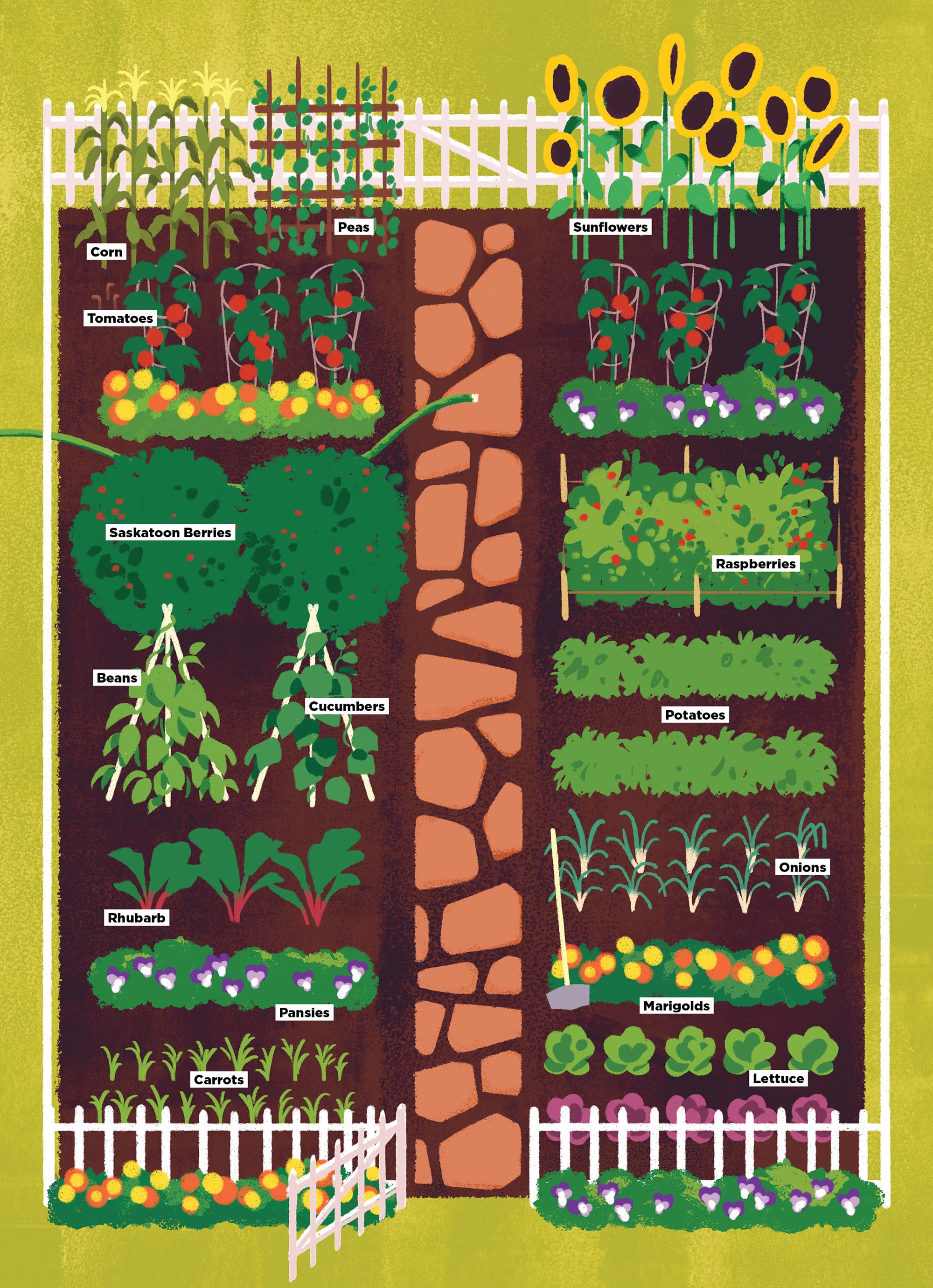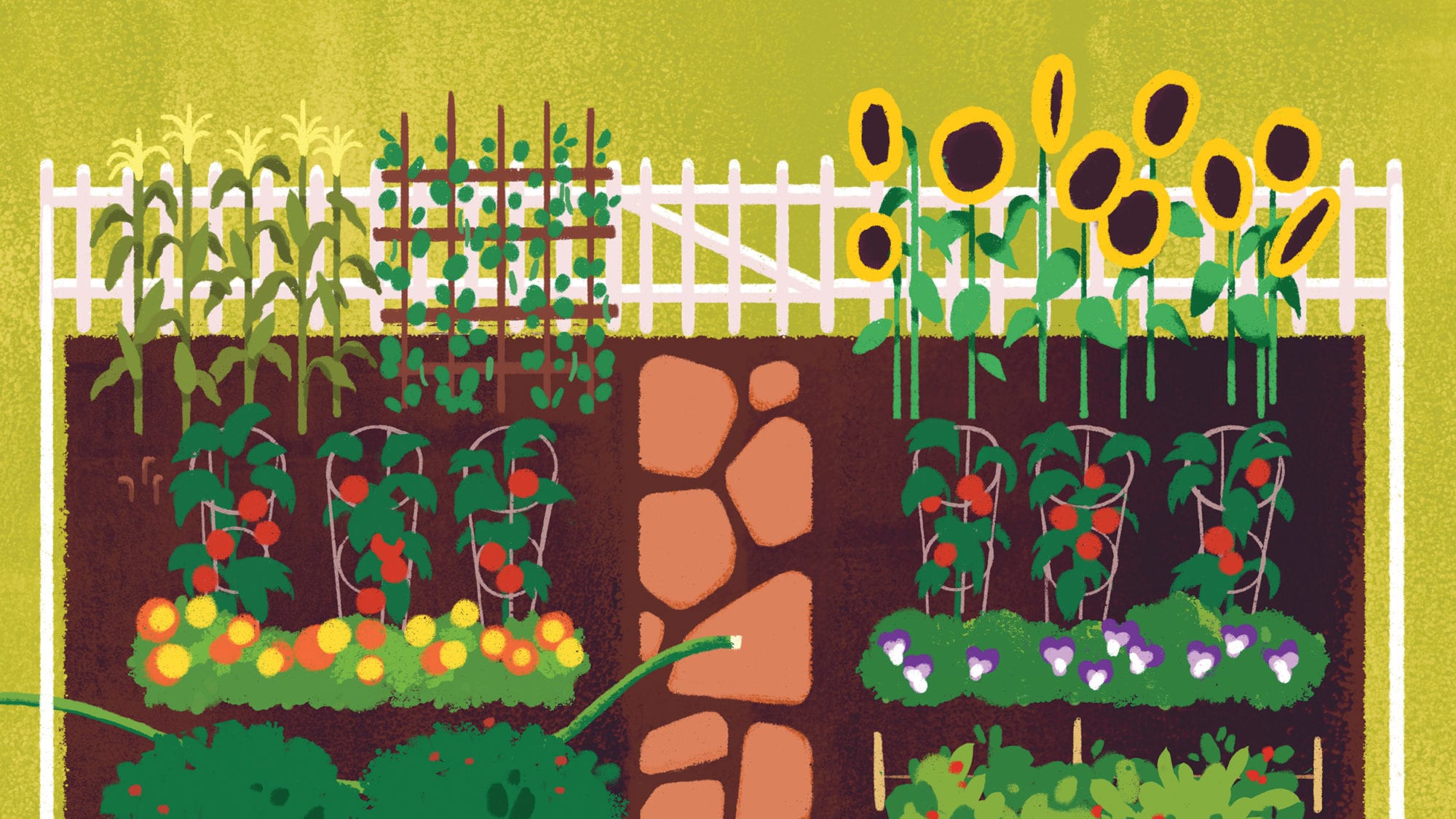How does your garden grow? With some thoughtful planning, it can yield a bounty of fresh produce. But the benefits of gardening extend beyond the dinner plate. Research by McMaster University shows it supports physical fitness, boosts self-esteem, fosters creativity and restores calm. A garden also helps trim your grocery bill, while teaching kids about food and nature. We consulted the experts at Red Deer’s Parkland Nurseries and Garden Centre for strategies to plot out a garden and care for it until harvest time—green thumb not required!
SURVEY YOUR LAND
How much space can you dedicate to a garden? Keep in mind you should be able to easily reach every corner. Choose a spot with full sunlight, away from shade-giving trees or bushes. Ensure a hose or other water source can comfortably reach your desired plot.
PLOT IT OUT
Plan straight rows for an in-ground garden (or quadrants for raised beds). Using labelled garden stakes, mark rows about half a metre apart to allow you to move freely between them. A centre row of stepping stones provides easier access for watering and weeding.
DISH THE DIRT
Check with Parkland or your local garden centre to determine the right type of soil for your location. Aim for about 15 cm of depth and consider topping with a layer of compost for added nutrients.
MORE TO READ
Prepare your yard in early spring for better growing in summer and fall
VEG OUT
Depending where you live in the province, mid-May is typically the optimal time to sow seeds. Plant bushy tomato plants, tall corn and trellised peas near the rear edge to limit shading. Plant early-harvest veggies, like onions and lettuce, toward the garden’s front. Avoid growing tomatoes and potatoes next to each other as they share common diseases. Other options include beans, rhubarb, carrots and cucumbers.
FRUIT AND FLOWERS
Many fruits, such as raspberries and Saskatoon berries, flourish in Alberta, while flowers encourage pollination. Set tall sunflowers in the back row to limit shade; break up rows of veggies with shorter blooms, including pansies or marigolds.
JUST ADD WATER
Water a couple of times a day early in the season to help establish roots and germinate seeds. After that, a thorough water once daily should do it. Try to water at ground level, directly at the roots, and water in the morning to prevent moisture buildup and overnight mildew growth.

MORE TO READ
Kitchen gardening 101: Tips for growing fresh herbs and produce indoors
TOP SEED
Some tender plants (like tomatoes, peppers, cucumbers and squash) are more sensitive to frost. Give them a head start indoors.
1. In March, pick up potted seedlings at a garden centre or do it yourself by planting seeds in small plastic pots with ample drainage.
2. When temperatures climb above 5 C daily, set seedlings outdoors, so they get used to the outside air.
3. Transplant seedlings to the garden at the end of May, after the frost risk has passed.
4. Once in the ground, water often: Seedlings need to establish a firm root system and topsoil tends to dry out quickly.
HOW TO SAVE
AMA members save 10% on select regular-price seeds, plants, perennials and more at Parkland Nurseries and Garden Centre.
